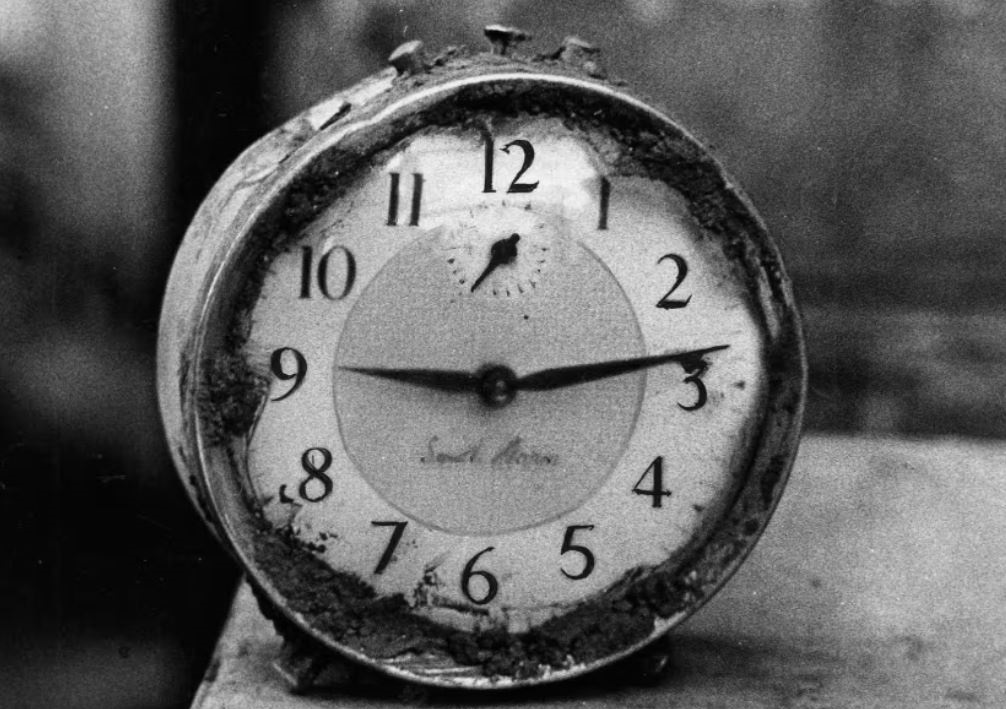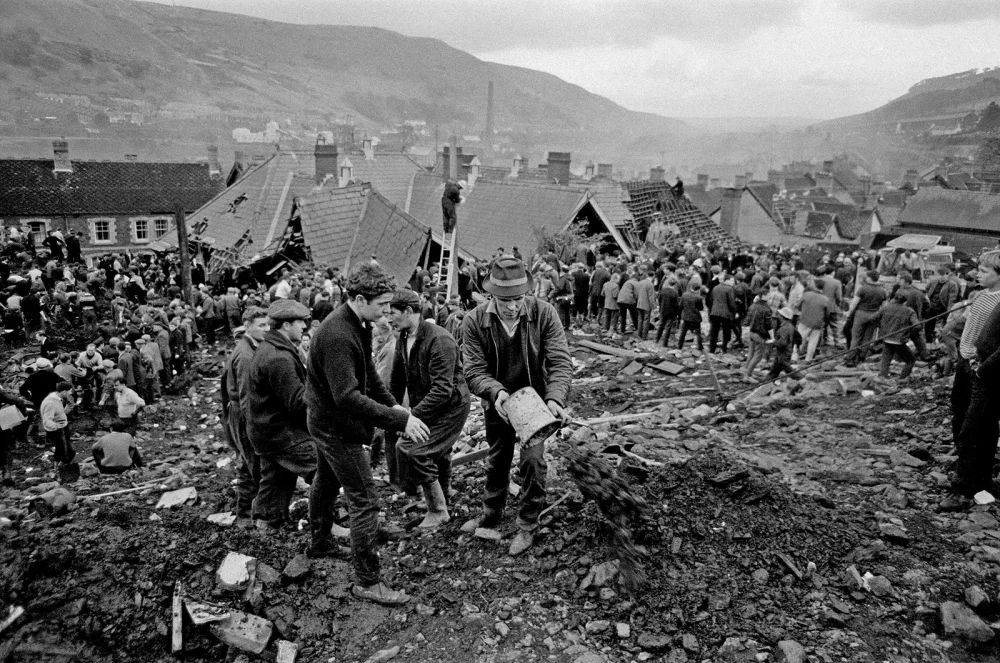Cofiwn: World remembers Aberfan disaster

Aberfan in the days following the tragedy, demonstrating the scale of the debris slide.
Today, individuals around the globe reflect on one of the most heartbreaking events in Welsh history—the Aberfan disaster of 1966. This tragic incident took away an entire generation from a small mining community.

The kids at Pantglas School in Aberfan were getting ready for their school break and had arranged a special half-day as a special treat.
It wasn't uncommon for the community to experience heavy rain beforehand, but the fog caused some students to arrive late, even after the last notes of "All Things Bright and Beautiful" had been sung.
Shortly after, a massive surge of 1.4 million cubic feet of coal refuse rushed down the slope, claiming the lives of 116 children and 28 adults as it overtook Pantglas Junior School and a line of nearby homes.
The National Coal Board (NCB) was in charge of the tip, and the investigation that followed held the organization, along with nine specific employees, responsible for the tragedy.
Gaynor Minett, one of the schoolchildren who survived, remembered the tragedy of that morning, when she lost both her brother and sister, four years later.
“Our teacher, Mr. Davis, pulled out the board and wrote down our math assignment. We were all busy working when it started,” she recounted.
There was a massive booming noise that silenced the entire school.
It was so quiet you could practically hear a pin drop. Everyone sat completely still in their seats. I barely managed to stand up and had just made it to the edge of my desk when the noise became louder and closer. That's when I saw the dark figure outside the window.
"I can't recall much, but when I awoke, I realized that a terrifying nightmare was unfolding right before me."
The Aberfan Disaster Memorial Fund (ADMF) was created on the same day as the tragedy occurred.

It gathered close to 88,000 donations, amounting to £1.75 million. The leftover funds were taken away only after a prolonged struggle by the people of Aberfan, who faced opposition from the National Coal Board and the government, citing financial reasons.
The site’s cleanup was funded by a government grant and an involuntary payment of £150,000 sourced from the memorial fund.
In 1997, the UK government returned £150,000 to the Aberfan Disaster Memorial Fund (ADMF). A decade later, in 2007, the Welsh Government contributed £1.5 million to the fund and an additional £500,000 to the Aberfan Education Charity as compensation for the funds that had been improperly taken.
A lot of people in the village faced health issues because of the disaster, and about half of those who survived have dealt with post-traumatic stress disorder at some point in their lives.
The 10:30 am BBC news updates highlighted the tragedy, prompting thousands of volunteers to head to Aberfan to offer assistance. However, their presence sometimes interfered with the operations of skilled miners and professional rescue crews.
In one classroom, 14 bodies were discovered, while outside, mothers battled through the thick mud, desperately searching for their children. Many were taken away in tears.
David Beynon, the 47-year-old deputy head of the school, had been at the institution for just six weeks when his body was discovered among the rubble.
A lot of the rescuers were miners from the area, and their own kids were in school that day. One of them talked about finding Beynon’s body, mentioning, “He was holding five children in his arms, almost like he was trying to shield them.”

Wales is still home to around 4,000 coal waste dumps, similar to the one that caused the tragedy in Aberfan. In 2020, after several days of heavy rainfall and storms, one of these dumps collapsed in Tylorstown, but fortunately, nobody was injured.
The Welsh government has made available online maps showing the 350 coal waste tips that are considered the most dangerous. In recent years, the government has conducted 2,000 safety inspections of these coal tips, which has cost nearly £60 million.
Last Tuesday, First Minister Eluned Morgan faced tough questions regarding the matter in the Senedd, informing members that she had discussed it with UK Prime Minister Keir Starmer.
In August 2021, a tribute sculpture created by Welsh artist Nathan Wyburn was set up at the Rhondda Heritage Museum.
In January 2022, there was an initiative to locate a permanent place for the items recovered from the tragedy. Among these artifacts was a clock that had frozen at the precise moment the disaster happened.
In February of that year, the cemetery, along with the memorial garden and the nearby tip and slide path, was added to the Cadw/ICOMOS Register of Parks and Gardens of Special Historic Interest in Wales. The registry designates the Grade II site as having significant national importance and value.
The tragedy was portrayed in one of the most touching episodes of the third season of The Crown, with both audiences and reviewers praising it as one of the most impactful television moments they've ever experienced.
The world continues to grieve for the 144 lives that were taken that day in Aberfan, and memorial events are planned to occur in the village today.
As the nation grieves, its collective hope remains strong that a tragedy like this will never occur again.
Linda, who currently resides in Australia, recalled, "I was thirteen when I went to Pantglas that day."
"I will forever hold in my heart the friends I've lost and the strength I found to get through it. I still find myself in tears."
Support Your Nation Today!
By contributing the cost of a monthly coffee, you can support the establishment of a national news service for Wales, created by and for the people of Wales, that operates independently and as a non-profit organization.







































